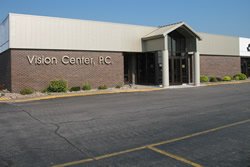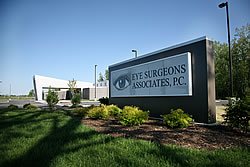By Carlton Fenzl, M.D.
A corneal transplant is needed when the clarity of the cornea, or the first structure that light penetrates as it enters the eye, cannot be corrected with eyeglasses or contact lenses. Often there is painful swelling that cannot be relieved by medications or special contact lenses. Corneal failure can be caused by trauma, injury, infection, a hereditary condition called Fuchs’ dystrophy or Keratoconus. Over the last decade, much progress has been made in the successful outcomes of corneal transplants.
About 10 years ago surgeons moved away from full-thickness corneal transplantation in an effort to improve patient comfort, healing time and visual results. The drawbacks of induced astigmatism, unpredictable refractive changes, weakening of the eye and risk of graft rejection prompted the development of faster, safer, and better solutions.
The introduction of DSAEK (Descemets Stripping Automated Endothelial Keratoplasty) revolutionized corneal transplantation. The front surface of the cornea is a thin layer of skin which adheres to the tough, clear substance of the cornea known as stroma. This layered structure is compact and transparent because of a thin single layer of cells on the inside surface. These cells are known as the endothelium, and their purpose is to continually pump fluid out of the stroma to keep it compact and clear. In this operation, the abnormal endothelial layer is removed and replaced by a thin disc of donor endothelium and stroma placed inside the eye through a small peripheral incision. The tissue adheres to the back of the cornea because of the natural suction applied by the healthy endothelium.
Helen, a retired nurse who lives in Muscatine after 50 years of living in Galesburg, is a 76-year-old Eye Surgeons patient who had the DSAEK procedure in 2016 on her left eye performed by Dr. Fenzl.
“I didn’t realize how much my vision had deteriorated until that first procedure was done,” said Helen. “My experience with Eye Surgeons was very good and even the office staff was gracious and accommodating. I finally understand what the big difference is between regular TV and HDTV! I can actually see the distinction between the two.”
A new procedure known as Descemets Membrane Endothelial Keratoplasty (DMEK) is now used as one of the latest improvements. DMEK further improves this procedure by using a thinner disc of tissue made up of only endothelium and Descemet’s membrane. This tissue is more difficult to handle, but once in place provides improved visual outcomes as well as decreased rejection rates compared to both DSAEK and full thickness cornea transplants.
In 2018, Helen was back for surgery on her other eye only this time using the DMEK procedure. “The change in my clarity of vision was immediate, but by the second day post surgery, it was remarkable,” Helen shared.“ And I just can’t say enough nice things about Dr. Fenzl and his team! I was not fully sedated during surgery so I could still hear them while they did the procedure. They were all so kind to each other and had excellent teamwork. It’s like they are a well-oiled machine,” Helen exclaimed.
The improvement in corneal clarity begins shortly, and patients often are able to get new glasses one month after the procedure as opposed to six months after surgery. DSAEK is still a great surgery, however, DMEK may be a better option for patients with Fuch’s Dystrophy and no other serious ocular problems.
BIO: Dr. Carlton Fenzl, with Eye Surgeons Associates, is certified by the American Board of Ophthalmology and received subspecialty credentials in diseases and surgery of the cornea. He practices at ESA’s Rock Island and Geneseo, Illinois offices.
The material contained in this article is for informational purposes only and is not intended to be a substitute for professional medical advice, diagnosis, or treatment. Always seek the advice of your physician or other qualified health care provider.




